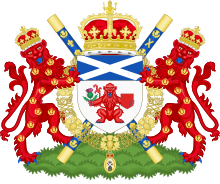 The arms of office of Lord Lyon King of Arms The arms of office of Lord Lyon King of Arms | |
| Heraldic tradition | Gallo-British |
|---|---|
| Jurisdiction | Scotland |
| Governing body | Court of the Lord Lyon |
| Chief officer | Joseph Morrow, Lord Lyon King of Arms |
| Part of a series on |
| Scots law |
|---|
 |
| Administration |
| Civil courts |
| Criminal courts |
| Special courts |
| Criminal prosecution |
| Legal profession |
The Right Honourable the Lord Lyon King of Arms, the head of Lyon Court, is the most junior of the Great Officers of State in Scotland and is the Scottish official with responsibility for regulating heraldry in that country, issuing new grants of arms, and serving as the judge of the Court of the Lord Lyon, the oldest heraldic court in the world that is still in daily operation.
The historic title of the post was the High Sennachie, and he was given the title of Lord Lyon from the lion in the coat of arms of Scotland.
The post was in the early nineteenth century held by an important nobleman, the Earl of Kinnoull, whose functions were in practice carried out by the Lyon-Depute. The practice of appointing Lyon-Deputes, however, ceased in 1866.
Responsibilities
| This section needs additional citations for verification. Please help improve this article by adding citations to reliable sources in this section. Unsourced material may be challenged and removed. Find sources: "Lord Lyon King of Arms" – news · newspapers · books · scholar · JSTOR (July 2023) (Learn how and when to remove this message) |
The Lord Lyon is responsible for overseeing state ceremonial in Scotland, for the granting of new arms to persons or organisations, and for confirming proven pedigrees and claims to existing arms as well as recognising clan chiefs after due diligence. The Lyon Register (officially the Public Register of All Arms and Bearings in Scotland), on which the Lord Lyon records all Scotland's coats of arms, dates from 1672. The Lord Lyon formerly also registered and recorded clan tartans, only upon request from the clan chief, but this function has been taken over by the Scottish Register of Tartans.
As Lyon Court is a government department, fees paid for granting coats of arms are paid to the Treasury. The misuse of arms is a criminal offence in Scotland, and treated as tax evasion. Prosecutions are brought before Lyon Court, Lord Lyon being the sole judge. Appeals from the Lyon Court can be made to the Court of Session in Edinburgh.
There is no appeal if the Lord Lyon refuses to grant a coat of arms, as this is not a judicial function, but an exercise of his ministerial function, although an appeal by way of judicial review may succeed if it can be shown that the Lord Lyon acted unreasonably.
Equivalents
| This section needs additional citations for verification. Please help improve this article by adding citations to reliable sources in this section. Unsourced material may be challenged and removed. Find sources: "Lord Lyon King of Arms" – news · newspapers · books · scholar · JSTOR (July 2023) (Learn how and when to remove this message) |

The Lord Lyon has several English equivalents:
- Being responsible for Scottish state ceremonies he parallels the Earl Marshal in England.
- The Lord Lyon is the heraldic authority for Scotland, much as the English Kings of Arms are responsible for granting arms in England. England has three "Kings of Arms", or high heraldic officers (Lord Lyon is Scotland's only one): Garter Principal, Clarenceux (responsible for southern England), and Norroy and Ulster (responsible for northern England and Northern Ireland). Unlike the English Kings of Arms, who cannot grant arms without a warrant from the (English) Earl Marshal, Lyon does not need permission, but grants by his own power.
- Whilst in England the Court of Chivalry (which last met in 1954) is a civil court, in Scotland the Lyon Court meets often and has criminal jurisdiction. Lord Lyon is empowered to have assumed coats of arms, and whatever they are affixed to, destroyed. As an example, when Leith Town Hall, now used as a police station, was renovated during the 1990s, several of the coats of arms decorating the Council Chamber were found to be attributed to the wrong person. The police were given special permission to retain the display, on condition that the tourist guides pointed out the historical anomalies.
The Lord Lyon is also one of the few individuals in Scotland officially permitted to fly the "Lion Rampant", the Royal Banner of Scotland.
Symbols of office
A new collar of state was made in 1998 – a chain with 40 gold links, replacing the item that went missing after the Battle of Culloden. In 2003 a new crown was made for the Lord Lyon, modelled on the Scottish royal crown among the Honours of Scotland. This crown has removable arches (like one of the Queen Elizabeth The Queen Mother's crowns) which will be removed at coronations to avoid any hint of lèse majesté.
Holders of the office
Lord Lyon Kings of Arms
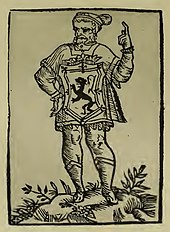





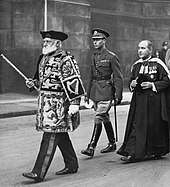


| Arms | Name | Dates of office | Notes | Ref |
|---|---|---|---|---|
| Unknown | pre 1399 (1377) |
There is an oft-repeated statement that Robert the Bruce created a Lyon King of Arms in 1318, but this is open to considerable doubt. The story seems to have been originated in the fifteenth century by a sub-prior of Arbroath Abbey, one William de Pittenweem. However, the Exchequer and other Records do not support the assertion and it is not until 1377 that the office of "Lyoun Herauld" is known to have existed. | ||
| Henry Greve | circa 1399 | The office of Lord Lyon predates the year 1399, but with Henry Greve recorded as the first holder during the reign of Robert III. Greve was recorded in an English Issue Rolls as "King of Scottish Heralds", and that he was at the Tower of London in 1399, either at or immediately after the coronation of Henry IV. The Lyon appears in several embassies about this period both to England and France. | ||
| ... Douglas | 1400–1421 | From 1391 onwards there is frequent mention of one Douglas, "Herald of the King", and in 1421 he is styled "Lyon Herald." | ||

|
Alexander Nairne of Sandford | 1437–1450 | The founder of the House of Sandford, Lyon King of Arms, and Comptroller of Scotland of James II. | |

|
Duncan Dundas of Newliston | 1450–1471 | The second son of James Dundas of that Ilk, Dundas was much noted in his time and was frequently employed in embassies to England. He is said to have discharged his duty in those negotiations "with integrity and honour". He acquired the feudal barony of Newliston, and founded a branch of the Dundas family there, the Dundases of Newliston. | |
| The Laird of Woodhead | 1471–1481 | |||
| Unknown | 1481–1489 | The name of this herald was not expressly mentioned, but he was sent on an errand as the king's "sympell servant" to Cumbernauld on the complaint of Lady Fleming in 1484. His seal was attached to a document and bears a crescent between three mullets, which may indicate that his name was Arbuthnot or Murray. | ||
| Sir Andrew Murray of Truim | 1489–1496 | Formerly Albany or Islay Herald | ||

|
Henry Thomson of Keillour | 1496–1512 | Thomson took several diplomatic missions as Lyon. Such as one in 1505, when he was sent to Denmark on behalf of King James IV. Thomson was described by his king as "an experienced councillor" and "a man of much diplomatic skill" had been requested by King John as a mediator (the two kings were cousins), and to inform him that Scotland was unable to send ships to aid him in the Dano-Swedish War. Formerly Islay Herald. | |
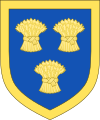
|
Sir William Cumming of Inverallochy | 1512–1519 | Cumming took an important ultimatum from James IV to Henry VIII arriving at his camp in Thérouanne, France, on 11 August 1513. Henry's angry exchange with Cumming was recorded. Henry's rejection of the terms led to a declaration of war between the two countries, as a result he was not present at the defeat at Flodden. He was however present at the coronation of the infant James V on 21 September 1513. In 1514 Cumming was involved in a fracas with Lord Drummond, when he was appointed to deliver a charge citing the Earl of Angus, to appear before the Council regarding his marriage with Margaret Tudor, the widow of James IV. During the course of this mission Cumming was struck by Lord Drummond (the earl's grandfather) and due to the sanctity of the King of Arms' office, Lord Drummond was confined to Blackness Castle and had all his estates forfeited. After suffering several months of imprisonment, Lord Drummond was later released and had the charges removed. Formerly Marchmont Herald. | |

|
Thomas Pettigrew of Magdalensyde | 1519–1542 | Much is not known about Pettigrew except that during much of his tenure he was deemed unfit to discharge his duties and his functions were actually performed by Sir David Lindsay of the Mount, who succeeded to the full title on Pettigrew's death in 1542. Formerly Angus Herald. | |

|
Sir David Lindsay of the Mount | 1542–1554 | Appointed Lyon King of Arms, with an annual grant out of the lands of Luthrie in Fife, as his fee. The brilliant Lindsay thus became doubly the head of the heralds and poet laureate of the Scottish court. In the former capacity he took part in several embassies of the reign, while in the latter he expressed with the greatest freedom his views on the reformation of church and state, and became the poet of the Scottish Reformation. In June 1531 Lindsay went on his first embassy as Lyon king to the court of the Emperor Charles V. The embassy, which was appointed by the parliament in the preceding April, obtained a renewal of the alliance between Scotland and the Netherlands for a second term of 100 years. 'The Register of Arms of the Scottish Nobility and Gentry’ was completed under his direction as Lord Lyon in 1542. However the manuscript remained unpublished until 1821 when it was printed from the Advocates Library. Formerly Snawdoun Herald. | |

|
Sir Robert Forman of Luthrie | 1555–1567 | Forman was made a pursuivant in 1540, and created Ross Herald in November of the same year. In 1561 he received the appointment of Lyon from Queen Mary, in which it is stated he had filled the office with great ability during her "umquhill deirest moderis tyme." He received his salary from the lands of Rathillet, as most of his predecessors had theirs from Collessie. He reigned till 1567, when he probably retired, as he did not die for some years later. He compiled the voluminous 'Register of Lord Lyon', which consisted of several armorial registers bounded together. | |
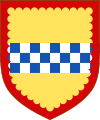
|
Sir William Stewart of Luthrie | 20 February 1567 | Stewart was formerly Ross Herald, and his commission as Lyon under the Privy Seal was dated on 20 February 1568. He was stripped of his office (after being in it for less than six months) and then convicted for attempting the murder of the regent, the Earl of Moray. Sir James Balfour writes that he was "transported from Edinburgh Castle to Dumbrittane and ther committed to closse prissone, for conspyring to take the Regent's lyffe by sorcery and necromancy, for which he was put to death." He was in fact burned at the stake in St Andrews on the 16 August 1569. The charge against Stewart, though nominally witchcraft, was no doubt politically motivated, due to his opposition to Moray and loyalty to Queen Mary of Guise. | |

|
Sir David Lindsay of Rathillet | 13 September 1568 – 1591 | Younger half-brother of Sir David Lindsay of the Mount. In 1545 he was Dingwall Pursuivant and created Rothesay Herald in 1557. He became Lyon in 1568, and was crowned with great solemnity in presence of the regent and many nobles. Dying in 1591, he was succeeded by his nephew another Sir David Lindsay of the Mount. | |

|
Sir David Lindsay of the Mount (Secundus) | 25 December 1591 – 1620 | The second David Lindsay was a son of the first's half-brother, Alexander Lindsay. He was crowned on 2 May 1592, with James VI himself placing the ancient crown of Scotland on his head. He wore this also, as he told Sir William Segar Garter King of Arms, on the same day at dinner with the king. According to the Book of Caerlaverock he was raised to the dignity of a Lord of Parliament at the time of the accession of James to the throne of England. He was a good herald, and a volume of his collections dated 1586, is in the Advocates Library. He resigned in favour of his son-in-law the next holder in 1620, and died two years afterwards. | |

|
Sir Jerome Lindsay of Annatland | 8 November 1620 – 1630 | Lindsay of Dunino and Annatland had married his predecessor's daughter, and succeeded through her to the estate of the Mount. He was the last of the Lindsay dynasty in the office of Lyon. Of his official acts there is little record. His commission was dated 8 November 1620, and he reigned for ten years, when he resigned office at the age of sixty-eight. | |

|
Sir James Balfour of Denmilne and Kinnaird, 1st Baronet | 20 April 1630 – 1654 | Balfour received his commission as a young man in 1630, without having gone through any of the lower heraldic offices, and was crowned at Holyrood by the Viscount Dupplin, the Lord Chancellor. He was well suited for the role and cultivated friendships with fellow heralds such as Sir William Segar, who described him as "ane expert and graduate herauld in blazing of cotts and armories, in inventing of crests and supporters, in searching of genealogies and discents, in marshalling of funeralls, triumphs, and inaugurations, etc., and in all ceremonies whatsoever pertaining to honour or amies." In 1633 he was created a Baronet by Charles I. Sir James Balfour Paul said of him: "it is sufficient to say that few more accomplished men ever held the office of Lyon." He reigned as Lyon during turbulent times and he was deprived of his kingly office by Oliver Cromwell. | |
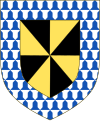
|
Sir James Campbell of Lawers | 13 May 1658 – 1660 | Oliver Cromwell, while he abolished the monarchy, did not extend the same fate to the crown heraldic, for he appointed two Lyons in his day. The first of these was Sir James Campbell of Lawers, who was commissioned to be "Lyon our Herald King of Arms," at Westminster on 13 May 1658. He was very soon followed by Gilbert Stewart, of whom we know nothing, save that he was deprived of office at the Restoration. | |

|
Sir Alexander Durham of Largo | 28 August 1660 – 1663 | Received his appointment on account of his services to the Royalist party in Scotland. His reign was not a long one, as he died in 1663. | |

|
Sir Charles Erskine of Cambo, Baronet | 4 January 1663 – 1677 | Appointed by Charles II in 1663. He succeeded in getting his son conjoined with him as a kind of "assistant and successor" on 27 June 1677. Sir Charles established the official Public Register of All Arms and Bearings. The fate of the old registers not having been known, perhaps they were burnt, lost at sea or looted when many books were taken by Cromwell or his armies to London. Despite repeated representations of the Scottish Parliament none were found. Sir Charles died in 1677. | |

|
Sir Alexander Erskine of Cambo, 2nd Baronet | 1677–1726 | Due to the arrangement in 1677, Sir Charles was succeeded by his son Alexander. An efficient officer, in 1702 he got a patent under the Great Seal to give the Lyon office to himself and his son (also named Alexander), declaring the office to be hereditary in his family. However his son predeceased him. He took part in the Jacobite rising of 1715, perhaps induced into it by his kinsman the Earl of Mar. He died in 1735, but he may have been deprived of office long before that. | |

|
Alexander Brodie, 19th of that Ilk | 6 July 1727 – 1754 | Elected a Member of Parliament (MP) for Elginshire in 1720, the laird of Brodie was an enthusiastic supporter of the government of Robert Walpole. He was rewarded with the Lyon office with a salary of £300 per year (equivalent to £56,000 in 2023). Brodie fulfilled the office with diligence. He was reputed to have enforced the laws of arms without fear or favour, and removed bogus arms even from senior peers. Despite being an informer for the Hanoverian regime, he was magnanimous to staff in the Lyon office who had supported the Jacobites. He intervened to protect them from punishment, ensured that their salaries were reinstated, and won a pardon from a death sentence for one of his clerks. | |
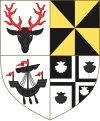
|
John Hooke-Campbell of Bangeston | 3 April 1754 – 1795 | A Campbell of Cawdor, and a nephew of Lord Cawdor. He probably inherited his Welsh estates through his mother's family and recorded arms in the Lyon Register with the name Campbell Hooke. He was seldom in Edinburgh, especially in the later part of his tenure of office. He met a sudden death in 1795. | |
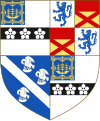
|
Robert Boswell of St. Boswells | 1795–1796 | From 1770 the Lyon Clerk and Lyon Depute was Robert Boswell, who was a cousin of James Boswell, Samuel Johnson’s biographer. As Lyon Depute, Robert Boswell signed the grant of arms to the University of Edinburgh in 1789. After the death of John Hooke Campbell, Boswell was Lyon ad interim until the appointment of Lord Kinnoull. | |

|
Robert Aureol Hay-Drummond, 10th Earl of Kinnoull | 26 May 1796 – 1804 | Born in 1751, his father was Robert Hay Drummond, the Archbishop of York. In 1739, his father took on the Drummond name and arms as heir of entail of his great-grandfather Viscount Strathallan. Robert Hay-Drummond succeeded to the title of Earl of Kinnoull on 27 December 1787 on the death of his uncle, Thomas Hay. In 1796 he was sworn into the Privy Council and made Lord Lyon. He died in 1804. During his tenure the Lyon office became a sinecure and the heraldic tasks of the office were performed by a Lyon Depute. | |

|
Thomas Robert Hay-Drummond, 11th Earl of Kinnoull | 12 April 1804 – 1866 | Born in Bath, Somerset, to the 10th Earl and his second wife, Sarah Harley, daughter of Thomas Harley, Lord Mayor of London. He succeeded his father as Lord Lyon in 1804 although, like his father before him, he took no interest in heraldic work. He served as colonel of the Perthshire Militia from 1809 to 1855, and from 1830 to 1866 he was Lord Lieutenant of Perthshire. He died in Torquay in 1866. | |

|
George Burnett | 26 July 1866 – 1890 | Born in 1822, he was the second son of John Burnett, 5th Laird of Kemnay. Burnett was admitted a member of the Scottish Bar in 1845. In 1863 he was appointed Lyon Depute; in this position he was practically the head of the heraldic executive in Scotland. Three years later he succeeded Lord Kinnoull as Lord Lyon, an office to which he was pre-eminently qualified. For nearly a quarter of a century he administered the office wisely and well, and made it once more an efficient and reliable heraldic court. | |
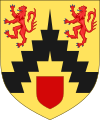
|
Sir James Balfour Paul | 12 March 1890 – 1926 | Born in 1846. He was educated at Royal High School and the University of Edinburgh. He was admitted an advocate in 1870. Thereafter he was Registrar of Friendly Societies (1879–1890), Treasurer of the Faculty of Advocates (1883–1902), and appointed Lord Lyon in 1890. He was created a Knight Bachelor in the 1900. Shortly before his retirement in 1926, he was appointed a Knight Commander of the Royal Victorian Order. He was also admitted an Esquire and then a Commander of the Order of St. John of Jerusalem, elected a Fellow of the Society of Antiquaries of Scotland and was also the Secretary of the Order of the Thistle. | |

|
George Sitwell Campbell Swinton | 1927–1929 | Born in 1859. Swinton began his career in the army and was gazetted to the 71st (Highland) Regiment of Foot in 1878. He was an aide-de-camp to the Viceroy of India from 1888 to 1894. As a Conservative he served on various municipal offices. Swinton also served as March Pursuivant. He was Albany Herald from 1923 to 1926 and served as Lord Lyon and Secretary to the Order of the Thistle from 1927 to 1929. | |
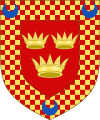
|
Sir Francis James Grant | 1929–1945 | Born in 1863, the son of John Grant, Marchmont Herald from 1884 to 1888, Grant served as Carrick Pursuivant beginning on 17 May 1886. This appointment lasted until his promotion to the office of Rothesay Herald and Lyon Clerk and Keeper of the Records on 8 September 1898. On 10 May 1929, he was appointed Lord Lyon. In 1935 he was made a Knight Commander of the Royal Victorian Order. Grant retired from the office on 30 June 1945. | |
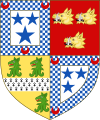
|
Sir Thomas Innes of Learney | 1945–1969 | Thomas Innes was born in 1893. Learney served as Carrick Pursuivant from 1926 to 1935 and as Albany Herald from 1935 to 1945. He was appointed Lord Lyon on 18 June 1945, until his retirement in 1969. On 10 June 1967 he was appointed a Knight Grand Cross of the Royal Victorian Order. | |

|
Sir James Monteith Grant | 1969–1981 | Born in 1903. Educated at the Edinburgh Academy and the University of Edinburgh, where he studied law, he was appointed a Writer to the Signet in 1927. He served as Carrick Pursuivant from 1946 to 1957 and as Marchmont Herald 1957–1969. He was appointed Lord Lyon in 1969, until his retirement in 1981. In 1969 he was appointed a Knight Commander of the Royal Victorian Order. | |

|
Sir Malcolm Rognvald Innes of Edingight | 1981–2001 | Born in 1938, the son of Thomas Innes of Learney. He served as Falkland Pursuivant from 1957 to 1958, then as Carrick Pursuivant from 1958 to 1971 and as Marchmont Herald from 1971 to 1981. He was Lyon Clerk and Keeper of the Records from 1966 to 1981. He was appointed Lord Lyon in 1981, until his retirement in 2001. Following this he was appointed Orkney Herald. He is also a Fellow, former president, and co-founder of the Heraldry Society of Scotland, as well as being Honorary President of the Scottish Genealogy Society. In 1990 he was appointed a Knight Commander of the Royal Victorian Order. | |

|
Robin Orr Blair | 2001–2008 | Born in 1940. Blair is a retired solicitor, and was a partner with Dundas & Wilson CS and later with Turcan Connell. He was appointed Lord Lyon on 9 February 2001, the first to have been appointed in accordance with the European Union's rules for appointments to the public service and the first senior member of the Royal Household in Scotland to have been appointed by the Scottish Executive rather than Whitehall. He was appointed after the position was publicly advertised. He retired in 2008. In the same year he retired he was appointed a Commander of the Royal Victorian Order. | |

|
William David Hamilton Sellar | 2008–2014 | Born in 1941. Sellar read history at Oxford University graduating as Bachelor of Arts before gaining a law degree (LLB) from the University of Edinburgh. He qualified as a solicitor in 1966, and in 1968 joined the Faculty of Law at the University of Edinburgh, where he was elected an Honorary Fellow in 1997. He was appointed Lord Lyon in 2008, until his retirement in 2014. In the same year he retired he was appointed a Member of the Royal Victorian Order. | |

|
The Reverend Canon Dr. Joseph John Morrow | 2014–present | Morrow is a member of the Faculty of Advocates, with degrees in Theology and Law. He was appointed Lord Lyon on 17 January 2014, and sworn in before the Lord President of the Court of Session on 27 February 2014. |
Lyon Deputes
| Arms | Name | Date of appointment | Notes | |
|---|---|---|---|---|

|
Sir William Cumming of Inverallochy | 1508 | Also Marchmont Herald | |

|
Sir David Lindsay of the Mount | 1528 | Also Snawdoun | |

|
Sir Robert Forman of Luthrie | 1554 | Also Ross | |

|
Sir David Lindsay of the Mount (Secundus) | 1568 | ||

|
Thomas Lindesay | 1591 | Also Snawdoun | |

|
Thomas Drysdale | 1627 | Also Islay | |

|
Laurence Oliphant | 31 January 1631 | Advocate | |

|
Harry Maule of Melgund | (1636) | ||

|
Sir David Balfour | 20 March 1650 | Advocate, afterwards Knight and Lord of Session | |

|
Sir John Baird, Lord Newbyth | 15 August 1663 | Advocate, afterwards Lord of Session | |

|
William Thomson of Fairliehope | 4 January 1666 | ||

|
James Skene | 10 November 1677 | (Joint) Also Kintyre | |

|
Robert Innes of Blairtoun | 4 November 1677 | (Joint, then sole from 10 November 1687) | |

|
James Douglas of Earnslaw | 5 May 1689 | ||

|
David Erskine | 6 June 1724 | Also Rothesay. | |

|
John Dundas of Newhalls | 1 November 1728 | ||

|
Thomas Dundas of Fingask | 18 June 1744 | Member of Parliament for Orkney and Shetland | |

|
Thomas Brodie | 30 August 1754 | ||

|
Robert Boswell of St. Boswells | 2 November 1770 | After the death of John Hooke Campbell in 1795, Boswell was Lyon ad interim until the appointment of Lord Kinnoull in 1796. | |
| James Home of Linhouse | 8 August 1796 | |||
| David Clyne | 21 February 1819 | (Interim) | ||
| George Tait | 24 April 1819 | (Interim) | ||

|
George Clerk Craigie of Dumbarnie | 1 April 1823 | Advocate | |

|
James Tytler of Woodhouselee | 2 June 1827 | (Joint, then sole from 1845) | |

|
George Burnett | 9 November 1863 | Appointed Lord Lyon King of Arms in 1866 and served in that post until his death in 1890. | |
| Office abolished in 1866. | ||||
Coat of arms

|
|
See also
References
- Moncrieffe, Ian; Pottinger, Don. Simple Heraldry Cheerfully Illustrated. Thomas Nelson and Sons. p. 48.
- Eiland, Murray (2018). "Gathering the Clans in California". The Armiger's News. 40 (1): 1–6 – via academia.edu.
- Moncrieffe, Ian; Pottinger, Don. Simple Heraldry Cheerfully Illustrated. Thomas Nelson and Sons. p. 63.
- Archived 27 September 2016 at the Wayback Machine The Court of the Lord Lyon website
- Holme, Chris; Duncan, Raymond (19 October 1998). "A Yankee sorts the Court of Lord Lyon". The Herald. Glasgow. Retrieved 25 February 2018.
- "Lord Lyon gets his crown back". The Scotsman. 13 July 2003. Retrieved 25 February 2018.
- "Offers of Arms: Kings, Heralds and Pursuivants".
- ^ Stevenson, J. H. (John Horne); Seton, George (1914). Heraldry in Scotland : including a recension of 'The law and practice of heraldry in Scotland' by the late George Seton. Glasgow, J. Maclehose. pp. 445–446.
- Campbell-Kease, John (1 March 2018). The Heraldry Society. Coat of Arms no 179.
- ^ Fox-Davies, Arthur Charles (1909). A complete guide to heraldry. London; Edinburgh : T.C. & E.C. Jack. pp. 40.
- Rogers, Charles; Grampian Club (1871–72). Monuments and monumental inscriptions in Scotland. London: London : Pub. for the Grampian Club C. Griffin. pp. 414.
- Burke, John (1835). "A genealogical and heraldic history of the commoners of Great Britain and Ireland, enjoying territorial possessions or high official rank; but univested with heritable honours". Notes and Queries. s4-VI (148): 377–378. doi:10.1093/nq/s4-vi.148.377-g.
- ^ Grant, Sir Francis James (1945). Court of the Lord Lyon: List of His Majesty's Officers of Arms and Other Officials with Genealogical Notes, 1318–1945. Society.
- ^ Paul, James Balfour (1900). Heraldry in relation to Scottish history and art; being the Rhind lectures on archaeology for 1898. Edinburgh, D. Douglas. pp. 81–88.
- Morgan, Hiram (2008). "Scotland in Renaissance Diplomacy 1473–1603, Scotland to Denmark" (PDF). University College Cork. Bloomsbury Academic. Retrieved 5 November 2018.
- Hutchinson, Robert (7 April 2011). Young Henry: The Rise of Henry VIII. Orion. ISBN 9780297859536.
- Thomas, Andrea (25 June 2008). Sixteenth-Century Scotland: Essays in Honour of Michael Lynch. BRILL. p. 52. ISBN 9789047433736.
- Thomas, Andrea (1997). "Renaissance Culture at the Court of James V, 1528–1542" (PDF). www.era.lib.ed.ac.uk. Retrieved 6 November 2018.
- ^ Stevenson, Katie (24 October 2013). Les 'autres' rois: Études sur la royauté comme notion hiérarchique dans la société au bas Moyen Âge et au début de l'époque moderne: The Scottish King of Arms: Lyon's place in the hierarchy of the late-medieval Scottish elite (in French). Walter de Gruyter. pp. 64–79. ISBN 9783486989304.
- Beveridge, James, M.A., & Russell, James, editors, Protocol book of Thomas Johnsoun 1528-1578, Scottish Record Society, Edinburgh, 1920: https://archive.org/details/scottishrecordso39scotuoft/page/n29/mode/2up?view=theater
- Mackay, Aeneas James George. "Lindsay, David (1490-1555)" . Dictionary of National Biography. Vol. 33. pp. 289–295.
- Learney, Sir Thomas Innes of (1971). Scots Heraldry: A Practical Handbook on the Historical Principles and Modern Application of the Art and Science. Genealogical Publishing Com. p. 74. ISBN 9780806304786.
- ^ Lindsay, John (1938) The Lindsays of the Mount, Publications of the Clan Lindsay Society, Vol V, No. 17, The Clan Lindsay Society, Edinburgh, pp. 9–82.
- UK Retail Price Index inflation figures are based on data from Clark, Gregory (2017). "The Annual RPI and Average Earnings for Britain, 1209 to Present (New Series)". MeasuringWorth. Retrieved 7 May 2024.
- Lang, Andrew M. (2009) . "Brodie, Alexander, of Brodie (1697–1754)". Oxford Dictionary of National Biography (online ed.). Oxford University Press. doi:10.1093/ref:odnb/64093. (Subscription or UK public library membership required.)
- Simpson, J. M. (1970). R. Sedgwick (ed.). "BRODIE, James (1695–1720), of Brodie, Elgin". The History of Parliament: the House of Commons 1715–1754. Boydell and Brewer. Retrieved 30 April 2015.
- ^ Emslie-Smith, Dr Donald (2005). "An Eighteenth Century Scots Heraldic Negotiation" (PDF). www.rcpe.ac.uk. Retrieved 7 November 2018.
- ^ James Balfour Paul (1908). The Scots Peerage. D. Douglas. p. 232.
- Welch, Charles. "Harley, Thomas" . Dictionary of National Biography. Vol. 24. pp. 406–407.
- Kearsley's Complete..., 2: Together with an Extinct Peerage of the Three Kingdoms List of All Their Family Names, Titles of Elder Sons & and Translation of Their Mottos. G. Kearsley. 1804. p. 355. Retrieved 9 August 2013.
- Burnett, George (1901). The family of Burnett of Leys, with collateral branches : from the mss. of the late George Burnett. Aberdeen Printed for the University.
- "Scottish Post Office Directories > Towns > Edinburgh > 1805–1834 – Post Office annual directory > 1832–1833". National Library of Scotland. Retrieved 29 September 2016.
- "Sir James Balfour Paul, Scottish Herald and Antiquary". The Times. 16 September 1931. p. 17.
- "New Lyon King of Arms". The Times. 14 September 1926. p. 17. Retrieved 17 July 2009.
- "No. 33489". The London Gazette. 26 April 1929. p. 2762.
- "No. 37137". The London Gazette. 19 June 1945. p. 3196.
- "Bio: Sir James Monteith Grant KCVO, FRHSC (Hon)". www.heraldry.ca. Retrieved 9 November 2018.
- Tomlinson, Richard (20 December 1992). "They also serve, who only ush". Independent.
- "Hunt for new Lyon King as Sir Malcolm lays down his Arms". The Herald. 2 September 2000. Retrieved 3 March 2018.
- "No. 24961". The Edinburgh Gazette. 13 February 2001. p. 304.
- "www.law.ed.ac.uk".
- "No. 25116". The Edinburgh Gazette. 9 November 2001. p. 2663.
- "New Lord Lyon King of Arms appointed". Scottish Government News. Retrieved 5 November 2018.
- "Advocate appointed new Lord Lyon King". HeraldScotland. 18 January 2014. Retrieved 5 November 2018.
Statutory acts
- Lyon King of Arms Act 1592
- Lyon King of Arms Act 1669
- Lyon King of Arms Act 1672
- Lyon King of Arms Act 1867
- The Superannuation (Lyon King of Arms and Lyon Clerk) Order 1979
External links
- Official website
- Society of Scottish armigers
- The Heraldry Society of Scotland's pages on the Lord Lyon Archived 21 April 2021 at the Wayback Machine
| Court of the Lord Lyon | ||
|---|---|---|
| King of Arms |  | |
| Officers of the Court |
| |
| Heralds of Arms | ||
| Pursuivants of Arms | ||
| Officers Extraordinary | ||
| Vacant Offices | ||
| Scottish clans | |
|---|---|
| List of Scottish clans | |
| Clans with chiefs |
|
| Armigerous clans |
|
| Culture and society |
|


